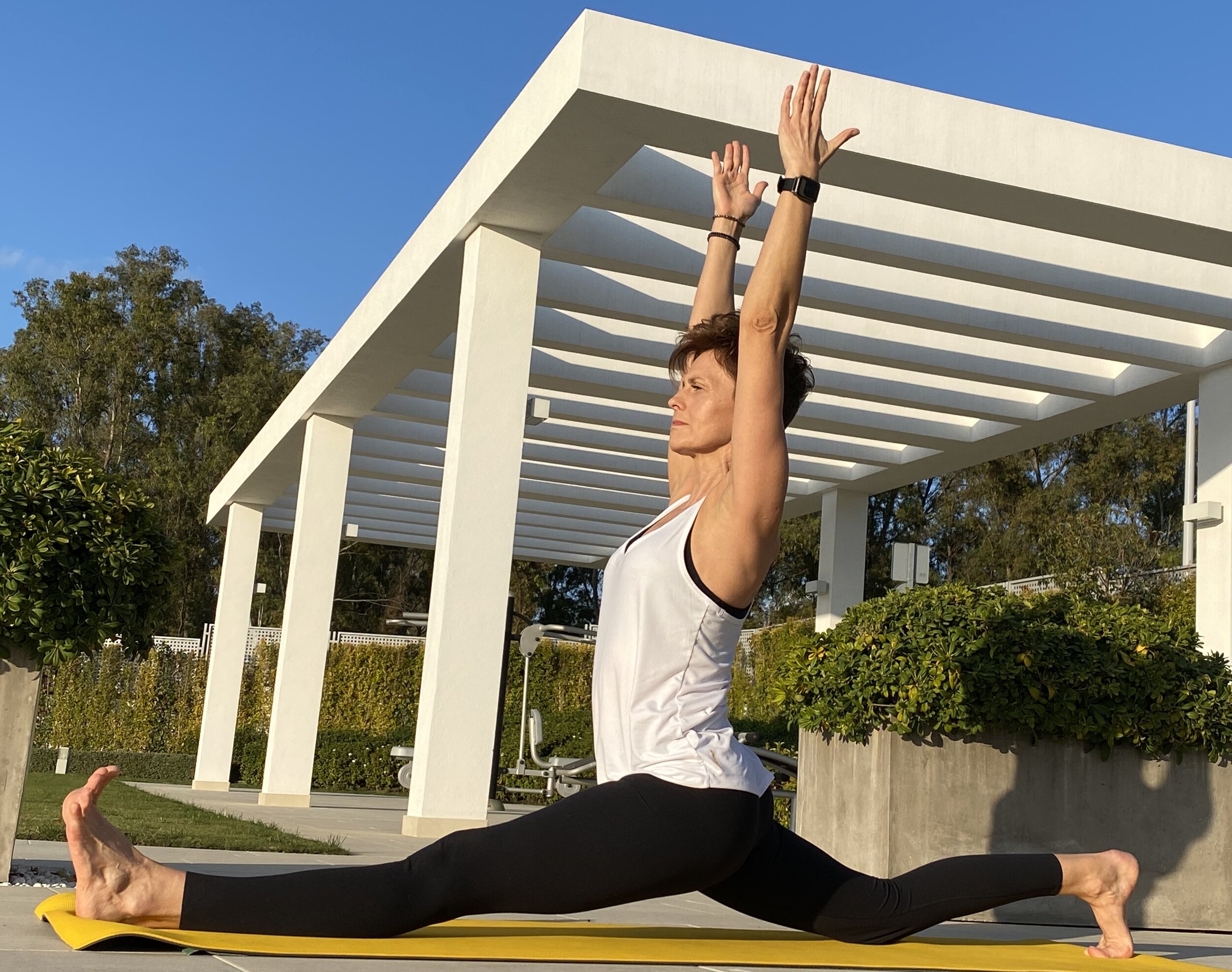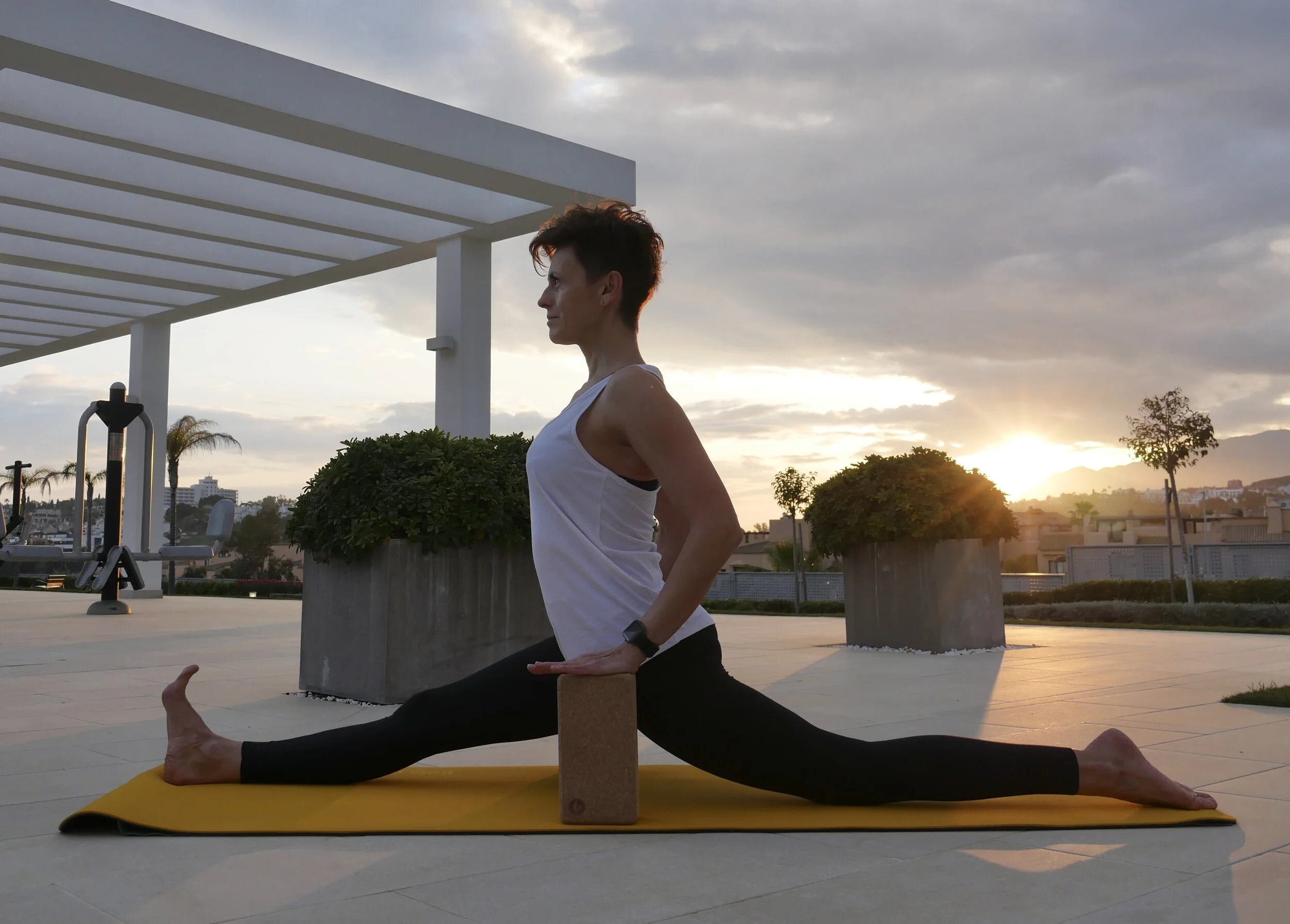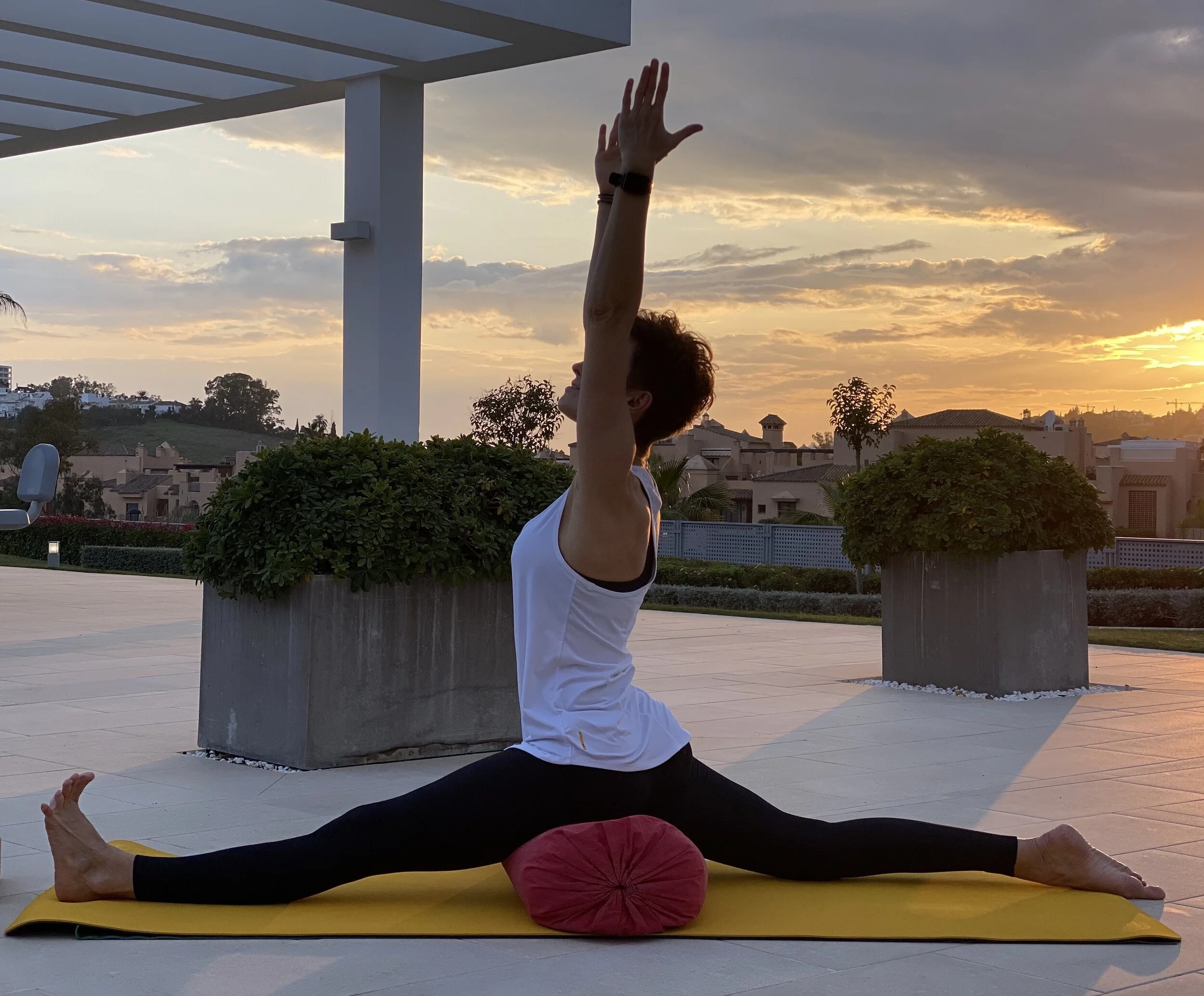Hanumanasana - devotion versus vanity
Hanumanasana undoubtedly looks super-cool. The asana is dedicated to the Monkey God, who is said to be invincible and immortal. This "split" leg pose reminds Hanuman's famous leap between India and (Sri)Lanka.
The story of Hanuman takes us to a different dimension. According to the Indian tradition, Hanuman was the son of Vayu, the God of the Winds and a nymph Anjana (or in some sources referred to as Anjaneya). As a young child of enormous appetite, he attempted to pick up the Sun, mistaken it for ripe fruit. Being struck by Indra in the act of punishment, he ended up with disfigured jaw and his name. As in Sanskrit word, Hanu means "jaw" and Man - "disfigured" or "broken".
Like in many other cases, it proves good to have a loving and powerful father who, in the act of protest, went on strike, disagreed with such a severe punishment. In other words, the wind stopped blowing. Unnecessary to say that this inaction of Vayu was turning the order of the world upside down. To buy forgiveness, Gods blessed Hanuman, Vayu's son, with countless boons: immunity to the weapon, water and fire; also speed, spiritual wisdom, immortality, ability to change the form to travel anywhere. Equipped so well, Hanuman made himself a warrior, the prominent character in the Ramayana. Undeniable, he became known not only for his strength but for his devotion and selflessness.
Hanumanasana is powerful and dynamic. This asana is praised for its difficulty as it requires flexibility balanced with stability. Definitely is no fooling around pose that teaches humility. Sometimes the most important lesson you receive from practising Hanumanasana is devotion in practice, patience and self-acceptance, even if you have to admit that the full version of this asana is not the best option for your body (because of the extreme range of motion in your hips). After all, your goal isn't the Cirque du Soleil.
It's easy to be deceived by the esthetics of the shape of this asana. However, it's worth remembering that the internal experience is of key importance. Resist temptation in collapsing into your own flexibility. Protect your joints and hamstrings; don't risk sacroiliac joint pain. Instead, engage your muscles. Focus on how it feels, not how it looks. Try to find your safe and happy medium.
Let's have a look at the anatomy behind Hanumanasana.
From this perspective, in full pose, legs are exposed to the contrary actions. The front leg is in the forward bend, while the back one in the backband. The whole asana is bound as the opposite leg restricts the action in the other leg. As those two actions derive entirely from the legs, it makes the pose very intense. Therefore, muscular activity is necessary to put the spine in the balance between those contradictory forces. The hip extension requires the stretch of the psoas and rectus femoris. We can execute the more relax stretch after engaging the back leg muscle (gluteus maximus) first. The front leg needs activity in the hip flexors: psoas and quadriceps to let the hamstrings and gluteus maximus lengthening. You build integrity of this asana by activating adductors in the action of bringing inner tights closer towards the midline. Finally, keep legs in the neutral rotation (neutral doesn't necessarily mean passive). Prevent the back leg's external rotation to protect the lumbar spine, the sacroiliac joint and the knee.
Preparatory drill:
1) for tight hamstrings:
Supta Padangusthasana,
Adho Mukha Svanasana,
Trikonasana
Parsvottanasana,
Parivrtta Trikonasana,
Ardha Hanunanasana,
Upavista Hanumanasana (the variation where the front leg is out wide, somewhat resembling the leg position of Upavishtha Konasana)
2) for internal rotation of the tights:
Tadasana
Salabhasana,
Uttanasana,
Virabhadrasana III,
Urdhva Prasarita Eka Padasana
3) for balanced pelvis
Parsvottanasana,
Virabhadrasana III,
Utthita Hasta Padangusthasana,
Supta Padangusthasana
As you approach Hanumanasana, practice with supports (blocks, bolsters).
Practising Hanumanasana, we learn how to be better people. It's not about mimicking mechanically shapes once seen on the internet page. Make a difference, evoke Hanuman in you by devoting your time and energy towards something important, like acknowledging your needs or showing a gesture of kindness to others.
Hanuman's leap requires a "little" bit of faith. This courage you practice on the yoga mat you execute in daily life, trusting yourself and letting your ideas be heard.
The attempt you make in approaching Hanumanasana gives you the power that is associated with Hanuman. You learn how to wake up this strength while facing difficulties that seem humanly impossible to deal with. Even though you are sometimes scared, this power will enable you to show your potential in every aspect of life.
Inspirations:
https://www.dailybandha.com/2012/05/hanumanasanafront-splits.html
https://yogaanatomy.net/hanumanasana/
https://blog.yogamatters.com/hanumanasana/
https://yogainternational.com/article/view/5-hanumanasana-variations-to-empower-your-practice
https://yogainternational.com/article/view/think-youre-not-flexible-enough-for-hanumanasana-try-these-tips-and-variations
https://yogaanatomy.net/hanumanasana/
https://www.tummee.com/yoga-poses/hanumanasana
https://www.jasonyoga.com/2014/10/01/hanumanasana





